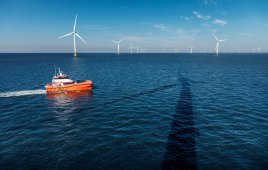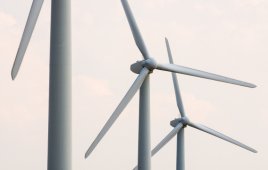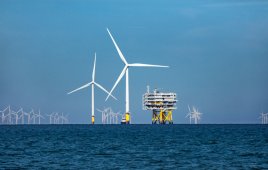
Thermal and high-resolution drone imagery typically provides more detailed and accurate inspection of wind-turbine blades and towers.
Annual wind-turbine blade and tower inspections by drone may greatly increase the safety, efficiency, and accuracy of an inspection service. What’s more is a drone equipped with high-resolution digital and infrared cameras can save time and costs, inspecting multiple wind turbines in the time it used to climb one.
“Thermographic testing that used to require two to three wind technicians and several days can now be completed with one drone and one tech in just a few hours,” says Terry Malagoli, CEO, Infrared Testing, Inc. (ITI), which provides drone services for thermographic testing of wind farms.
Infrared or thermal testing refers to a non-destructive inspection process that uses specialized cameras that can detect infrared radiation. The process measures minute temperature differences that are typically invisible to the human eye and can provide an extremely detailed image.
“Defects, such as cracks or other changes to the composition and emissivity of material alters the thermal signature of that material,” explains Malagoli. Emissivity is the ratio of the energy radiated from a material’s surface, which means its ability to emit, absorb, and transmit radiation. “So small changes to turbine blade composites can be detected by infrared that would otherwise go unnoticed by visual inspection alone. And detecting anomalies when they are small lowers cost and improves efficiency.”
To perform the inspection, a wind tech first connects the drone to RTK, a satellite navigation technology used to enhance the precision of position data derived from a GPS. “RTK enables the drone to fly more accurately and stay stationary when hovering and taking images, resulting in more accurate data and no run-ins with the turbine,” he says.
In addition, the testing can be performed in a variety of climates, day or night. The process also requires zero equipment shutoff, saving wind owners from lost production from asset downtime.
“Regular thermographic inspections are critical to the effective maintenance of wind turbines,” says Malagoli. “As a testing technique, it is accurate, repeatable, and economical.”
Filed Under: Drones, News, O&M



